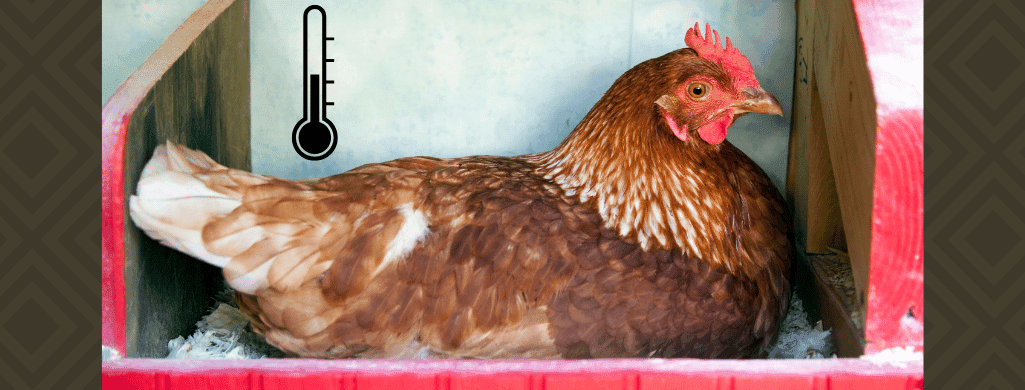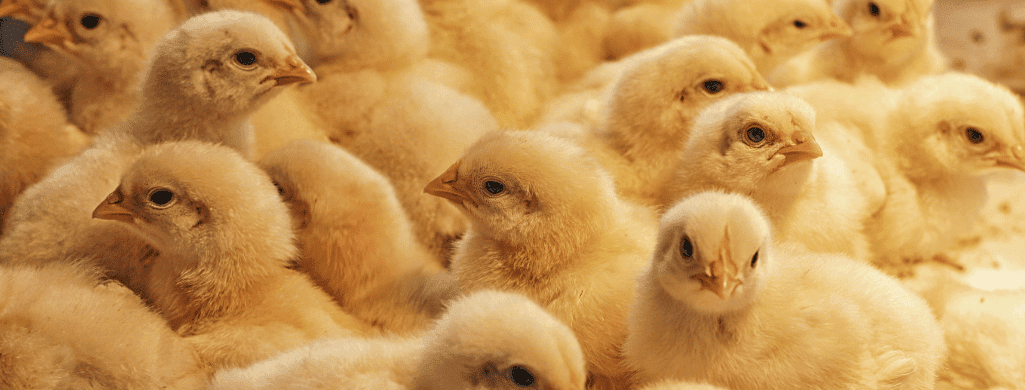After lowering the brooder temperatures over a few weeks, your ISA Brown chicks will no longer rely on an external heat source.
Sooner or later, the chicks outgrow their brooder and become very messy and loud.
The next logical step is to place them outside in the chicken coop.
But when can ISA Brown chicks go outside?
When temperatures outside are above 65° degrees Fahrenheit (18° C), and your ISA Brown chicks are at least 6 weeks of age, it is safe to move them to the coop. If you are brooding ISA Brown chicks in the colder months, you must wait until outside temperatures are warm.

Table of Contents
ToggleQuestions To Ask Before Moving Your ISA Brown Chicks Outside
You must determine if conditions are favorable before moving your ISA Brown chicks.
There are a couple of things to consider. Outside temperatures and the safety of your chicks are most important.
You must also consider how the rest of the flock will react to the new additions.
What Are Outside Temperatures?
Outside temperatures play an important role in determining when to move your chicks.
Adult ISA Brown chickens are hardy against cold weather. This is because of their larger size and dense feathering.
Read More: How Cold Can ISA Brown Chickens Handle?
Baby chicks cannot regulate their body temperatures for the first few weeks of life.
They need the constant heat output of a heat lamp to stay warm until they grow feathers.
On average, it takes 5-6 weeks before your ISA Browns lose their chick fuzz and grow feathers. Their adult feathers do not come in until they are 8-10 weeks old.
Related Reading: How To Help ISA Brown Chickens During Their Molt
Your baby ISA Brown chicks must acclimate to ambient air temperatures as well.
Lower the temperatures in the brooder a few degrees at a time over several weeks.
Once the chicks have acclimated to the ambient room temperature, you may remove the heat lamp.
A sudden drop in temperatures will cause your ISA Brown chicks to go into shock. Temperature shock is dangerous for baby chicks, and they may die.
Once outside temperatures exceed 65° degrees Fahrenheit (18° C), your 6-week-old ISA Brown chicks can survive in the coop.
During the winter months, it is best to wait until temperatures are warmer or your chicks have developed their adult feathers.
Do not attempt to place a heat lamp or other supplemental heat source in the chicken coop. Heating the chicken coop is dangerous and could start a fire.
The body heat output from your chickens is enough to keep the chicken coop temperatures warm, even during the winter.
Moving your ISA Brown chicks to the coop after one month is possible if evening temperatures are not too low.

Will Your ISA Brown Chicks Be Safe?
Next, you must consider the safety of your ISA Brown chicks.
Baby chicks are defenseless against attacks from predators.
It is important for a chicken coop and run to be secure before moving your chicks outside.
An outdoor chicken run must be secure on all sides.
A roof prevents aerial predators from attacking your chicks.
Placing chicken wire around the fence keeps coyotes, foxes, and other ground predators away from the baby chicks.
Burying hardware cloth along the bottom of the fence prevents predators from digging underneath.
Seal cracks and crevices in the chicken coop to keep smaller predators away. Ensure the door is secure at night as well.
You do not need a lot of space for your chicks. A larger area is more challenging to secure.
Provide around 2′ square feet for every 6-week-old chick. This gives your ISA Brown chicks enough room to spread their wings and is easy to secure.
Will Your ISA Brown Chicks Get Bullied by Other Birds?
If you already have a backyard flock, you must consider how they will react to the new chicks.
We recommend waiting until the chicks are 10-12 weeks old before introducing them to the rest of the flock.
Adult chickens have a pecking order, and they may bully the younger ISA Brown chicks until they establish a new pecking order.
There is no way to predict how your flock will react to the baby chicks until you put them together.
When your ISA Brown chicks are 10-12 weeks old, they are large enough to defend themselves against bullying.
Even if the rest of your flock is docile, you must take things slow when introducing the new chicks.
Initial introductions may begin as early as 6 weeks.
Keep the chicks separate from the adults with a wire fence. This allows the rest of the flock to see and smell the baby chicks so they become used to them.
Once the ISA Brown chicks are 10 weeks old, allow visitation with the flock only during the day. Supervise the interaction to ensure your chickens get along.
When the chicks are 12 weeks old, remove the wire fence separating them from the rest of the flock. Continue to watch your flock for signs of bullying for a couple of weeks.

How To Make the Move Less Stressful for Your Chicks
Anytime you move your chickens to a new home, it is stressful for them. The stress may cause behavior issues in your chicks until they acclimate to the chicken coop.
Keep your ISA Brown chicks in the secure coop for a few weeks to lower their anxiety.
Provide the chicks with access to food and water and give them ample time to adjust to the new surroundings.
Once the chicks realize they are safe in their new environment, it is easier to round them up into the coop at night.
When you first place your ISA Brown chicks in the coop, they will likely search for hiding places. You must close off access to the nesting boxes at night.
Keeping the chicks separate from the nesting boxes prevents them from pooping near the eggs at night when they sleep.
It is much easier to teach the chicks not to poop in the nesting boxes early on than to break them out of the habit later.
If you have laying hens in the coop, block the nesting boxes after your hens are done laying eggs for the day.
Read more about why your ISA Brown hens may not be laying.
You must open the nesting boxes back up first thing in the morning.
Giving your ISA Brown chicks a sense of security helps them adapt to their new home and makes the transition less stressful for the entire flock.
So Should You Move ISA Brown Chickens Outside?
You must move your ISA Brown chicks outside under the right conditions.
The age of your chicks and the outside temperatures are the two most important factors in the move.
You must also consider the safety of your ISA Brown chicks and how the rest of your flock will react.
Make the transition less stressful for your chicks by providing them with a secure home and giving them time to adjust to new surroundings.
Further Reading: ISA Brown Chickens And Hyline Breed Similarities And Differences
How useful was this post?
Click on a star to rate it!
We are sorry that this post was not useful for you!
Let us improve this post!
Tell us how we can improve this post?
